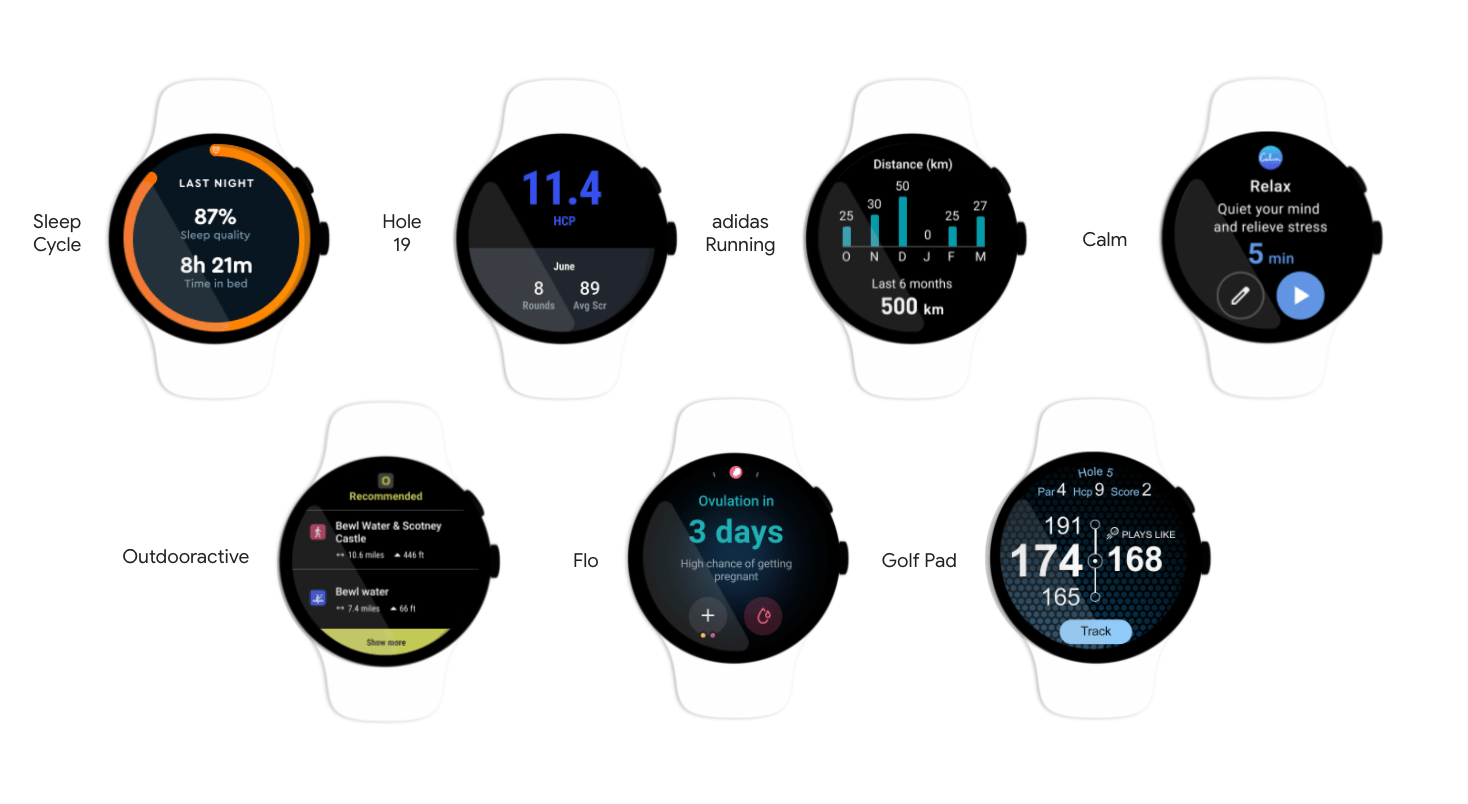Technology updates for mobile apps
June 25th, 2021 by Ishan GeeganageThe iOS operating system for Apple devices, and the Android operating system for Samsung and many other brands of mobile devices, are constantly being updated to provide tools to allow developers to implement new features supported by new hardware, and to improve the performance and security of apps on iTunes and the Google Play store.
This article provides an overview of some recent enhancements to the operating systems and developer environments, which will flow through to app features and opportunities for your future mobile apps.
Wearables

Both Apple and Google have recently enhanced the libraries and opportunities available for developers to provide richer experiences on wearables, such as the Galaxy watch and the Apple iWatch. This is in response to the increase in proliferation of wearables (watches, rings, fitbits etc) and the internet of things, whereby devices such as TVs, motor vehicles, gas meters, watering systems and the like are internet enabled.
Now 3rd party apps are able to add tiles to the watches bringing to the front of the user experience information from your app, where that was previously only available to proprietary apps. In addition, 3rd party apps have more access to notifications, including the ability to break through “do not disturb” features. However, we need to bear in mind that, particularly in the case of Apple, the review process is very stringent and Apple will be guarding the use of these features very carefully to ensure that they are only used in the most appropriate circumstances.
App Store Promotion
Apple, which lags behind Android with regard to the ease with which apps can be promoted, have announced that they are improving the Apple Store Connect to allow app owners to test images used within the app store, to select those that attract the most downloads, and promote events related to their apps also from within the app store.
Apple are now supporting promotion codes to be used by app purchasers in order for app owners to run promotions to provide a discount or free app usage for a period of time. However, Apple and Google continue to have differences in the way promotions run (Google being more flexible) which ultimately constrains the marketing of apps particularly when you want to be “fair” to all segments of the market. Google Play Store’s promotion code and discount functionality offers more flexibility than iTunes, and in fact Apple will no longer allow you to build in your own promotion code facility, even when all payment for the app is taking place via the Apple payment system.
Apple do like to promote their own ecosystem at the expense of others – not surprising really! Another example of this is if you allow users to sign in to your app using a 3rd party authentication mechanism such as a Google account or Facebook account, you must also allow them to use their Apple ID to login. This means that you require custom code in your cross platform app to remove the Apple ID login for Android users, and you need to support Apple ID login even if you aren’t expecting many users to want to login this way.
Google are also planning improvements to the Google Play Store with regard to promoting apps for wearables, and making it easier for people with wearables to install apps on their watch or other devices.
Privacy
Both Apple and Google are focusing on enforcing privacy for users of apps. We discuss the privacy changes on the Apple platform in another blog post about the launch of iOS version 14.5. Google’s Android version 12 (still in beta) is also giving privacy a boost in what it calls “Private by Design”. A few of the changes include Bluetooth scanning for nearby devices no longer requiring location services to be switched on, and where location services are required, allowing the user to only report an “approximate location”. In addition, users will be able to permit an app to take an action “this time only” instead of for all time.
Concurrency Supported Natively
Apple have released an updated version of Swift – the language in which developers now build iOS Apps – which allows concurrency (the app executing more than one command simultaneously) within the language. This is a big win for future app performance, for example, depending on your app concurrency could allow the user interface to continue to present new information to the user, while their previously submitted information is being processed. Kotlin – the language of choice for native Android development – has supported concurrency and threading for some time.
Compiling iOS Apps in the Cloud
Another important step forward in the iOS app development ecosystem is the announcement of XCode Cloud. Whilst still in beta, Xcode Cloud will facilitate continuous integration and continuous delivery for building apps and automatically send notifications to testers. This will be possible when XCode Cloud is used in conjunction with a git source code repository. It will also allow developers to compile the app in the cloud, rather than taking minutes / hours to compile on the developer’s computer, effectively preventing them from doing any work while that is happening.
Both Apple and Google are improving developer tooling to help developers test parts of their application through better emulators e.g. the new CarPlay simulator for Mac, and the new virtual heart rate sensor in the Google emulator.
Better support for Augmented Reality (‘AR’)
Google announced in March an overhaul of their Google Maps functionality, including the improvement of their Live View Augmented Reality feature which allows you to point your phone at the surrounding buildings (in large cities that have been mapped) or within buildings (such as inside airports) in order to figure out where you are, and get live on screen directions pointing you to where you need to go.

Apple has recently launched the RealityKit 2 library, in order to allow the creation of high-quality, photo-realistic 3D models of real-world objects in minutes by taking photos shot on iPhone, iPad, or DSLR and transforming them into 3D models optimized for AR. Google also has made recent improvements to the app developer environment for easier implementation of AR within Android apps.
AR is clearly an area where both platforms are keen to press forward and provide richer user experiences, and not just for gaming!
Foldables
With the release of foldable mobile devices such as the Galaxy Z Fold 2, the Android development libraries have been enhanced to allow developers to customise the user interface in different ways for foldable devices, and mobile devices with larger screen sizes.

All the above changes are welcome enhancements, but many of the features rely on users updating their phone operating systems or hardware. Still it is good to keep the above improvements in mind when considering functionality for your new app, or upgrades to an existing app.
If you would like to discuss your app idea, don’t hesitate to get in touch.







